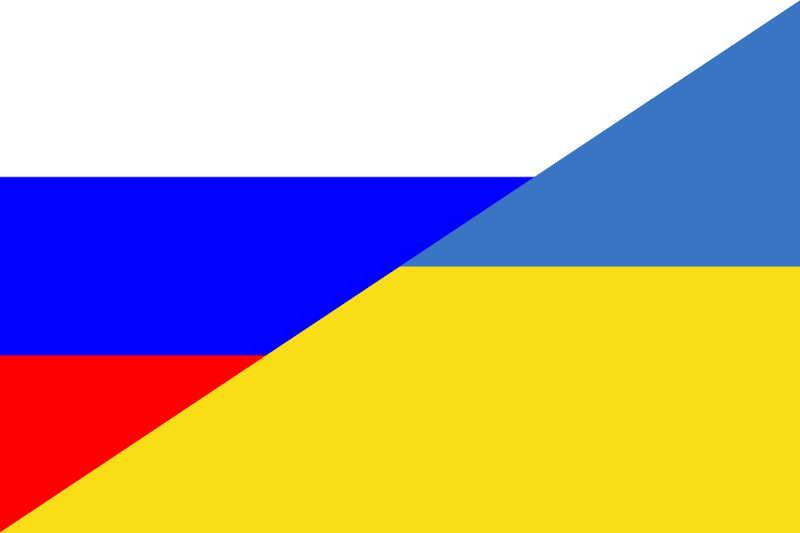 I, Eintracht4ever, release this work into the public domain.
I, Eintracht4ever, release this work into the public domain.
A Critical Assessment of Russian Sanctions
Since the Russian Federation annexed Crimea and began supporting rebel groups in the Donbass region of Ukraine in 2014, the US and many of its Western allies have maintained sanctions aimed at altering these actions. To consider these sanctions a success, they would have to contribute to Russia’s withdrawal from Crimea and Eastern Ukraine. The primary goals of these sanctions remain unrealized, as Russia’s hold in these territories has been largely unchanged over the past two years despite the Minsk II agreement.
The persistent stalemate in these areas cues to the fact that sanctions have not been an adequate approach to force the Kremlin to change its policies in the Ukraine. But why is this so? One way to address this question is to analyze the Russian sanctions in comparison to one of the more successful and recent uses of international sanctions—those targeting Iran.
The sanctions currently imposed on Russia and those that were imposed on Iran share similarities. Both sanction regimes contained provisions to: limit access to Western financial institutions, prohibit the export of certain oil and gas technologies, and restrict arms sales. Despite these similarities, the fact that only the Iranian case represents a success in achieving its goal—bringing Iran to negotiate to curb its nuclear program—leads to a hypothesis that it is not what sanctions target that determines success, but something else.
Where these two sanction regimes diverge significantly is the extent to which they are endorsed and enforced on a multilateral level. Between 2006 and 2010, the UN Security Council (UNSC) joined the US and EU in imposing sanctions on Iran that made them earnestly multilateral. Compared to the mostly regional concern surrounding Russia’s actions in Ukraine, the worldwide implications of Iran acquiring nuclear capabilities made it easier to pursue UN sanctions. Additionally, Russia’s permanent position on the UNSC makes international sanctions essentially impossible. Yet, the lack UNSC based sanction means that many nations are willing to bypass US and EU sanctions in favor of buying Russia oil—in stark contrast to the Iranian case.
The enforcement scope of a sanctions regime is a critical factor in determining why some sanctions succeed and some do not. This point is best illustrated with an examination of how oil exports were effected in Russia and Iran under the relevant sanction regime—as both countries predominately export oil and gas products. The multilateral nature of UNSC sanctions meant Iran was unable to find robust export markets for its oil, and countries like the United States and Saudi Arabia simultaneously compensated for this change in global oil supply.
This has not been the case with Russian sanctions. The lack of a concerted international backing of Russian sanctions, the accessibility of Russian oil and gas, and growing energy demands in much of the developing world means that Russian energy is still getting to market. Thus, any hope of prolonged economic downturn in Russia cascading into a shift of policy in Ukraine are fading as its GDP growth rates are beginning to increase. Whereas economic hardships in Iran contributed to the election of moderate Hassan Rouhani, who initiated nuclear negotiations, Russia has not followed the same trajectory, as Putin has maintained high approval ratings throughout the period of the sanctions.
All of this is not to suggest that sanctions against Russia were an ill-conceived strategy from the beginning. Rather, the point of this analysis is that the sufficient conditions that helped lead to the success on the Iranian sanctions have been absent in the case of Russia.
If it is still in the United States’ interest to overturn Russia’s continued presence in Crimea and the Donbass, it is prudent to consider if and how sanctions will achieve this goal. Considering Russia’s upward economic outlook discussed earlier, the current level of relatively lax sanctions will not achieve this strategic end. One policy direction that could be pursued is ratcheting up both the scope and severity of current sanctions so that they more closely resemble past Iranian sanctions. This policy would not be without considerable risks, especially for those European countries who are largely dependent on Russian energy exports.
Due to the potential blow-back associated with increasing sanctions, a sounder approach is to incorporate sanctions into a broader strategy to remove Russian influence. The specifics of this strategy are not as important as the fact that sanctions are not sufficient on their own. If the United States and its allies were to effectively improve Ukrainian military capacity, pursue better diplomatic solutions, in addition to economic pressures through sanctions, Russia may then be sufficiently coerced to change its policy.






Very concise evaluation and recommendation
The comparison of Iranian sanctions to their Russian counterparts is telling. What is done from here regarding Russian sanctions then will be equally telling for the stability of the region in question and Russia’s status on the world stage.
Precise. Accurate, straight talk. Good job.